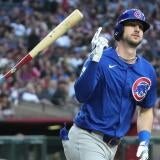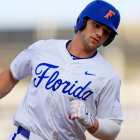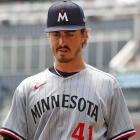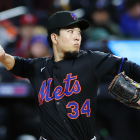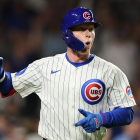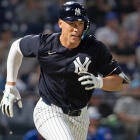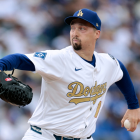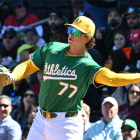
Major League Baseball's amateur draft will kick off on Sunday, July 14, alongside the start of the All-Star Game festivities (hosted this year at Globe Life Field in Arlington, Texas). The Cleveland Guardians will make the No. 1 selection for the first time in franchise history, having won the right to that pick as part of last winter's draft lottery. The Guardians have, on five occasions, chosen as highly as No. 2 overall.
It's a well-established reality that MLB's draft can be tougher to get into than similar offerings by the NFL or the NBA -- most of the players selected have limited national television exposure (though things are improving in that respect), and all require some time in the minors before they're ready.
With that in mind, we here at CBS Sports figured it would be useful to put together a collection of storylines worth knowing ahead of the draft. Scroll slowly with us as we touch on four in particular, won't you?
1. Who goes No. 1?
The top of the draft seems like a fine starting point for this exercise. These decisions are often left unmade until the final hours heading into the event, when teams and agents get serious about finances. From there, teams have to make a call based on how they evaluate the players under consideration, as well as the opportunity costs that arise from each pick.
The Guardians are highly unlikely to use the entire $10.57 million bonus slot assigned to the No. 1 selection. Instead, as we explained last month, first-year scouting director Ethan Purser should be able to cut an underslot deal that allows him more financial breathing room to take players who slip later in the draft than their talent demands. (The Baltimore Orioles, Houston Astros, and Pittsburgh Pirates have used this approach to good effect.)
As for who the Guardians may take at the top, other front offices have been adamant since early spring that the Guardians are enamored with Oregon State second baseman Travis Bazzana, our No. 2 prospect in the class (behind only Georgia third baseman/outfielder Charlie Condon). That doesn't mean Bazzana will definitely be the pick -- again, in many ways this is a math problem -- but keep that name in mind heading into the weekend.
2. Will Caglianone be allowed to play both ways?
For our money, the most interesting player in this class is Florida two-way player Jac Caglianone, who we ranked as the No. 5 player on the board. As a left-handed hitter, he established a new school record for home runs while showing impressive bat-to-ball skills; as a pitcher, he's proven capable of missing bats and dialing his fastball into the upper 90s.
It's understandable if you're having visions of Shohei Ohtani dancing around in your head, but it's not that simple. Foremost, it's unclear if Caglianone will continue playing both ways. Indeed, most scouts we've talked to believe his future is in the batter's box.
To understand why that is, check out our recent deep dive into Caglianone and two-way players.
3. Which pitcher wins out?
This class is led by a lot of collegiate bats, but that doesn't mean there are zero good arms available. Most of the insiders we've spoken to have two names competing for the top pitcher slot: Wake Forest righty Chase Burns and Arkansas lefty Hagen Smith.
We prefer Burns for two reasons. One, he has a deep arsenal; two, he threw more strikes throughout his collegiate career. It doesn't really matter who we prefer, though, and we know some evaluators who take the opposite stance. That explains why there've been murmurs that Smith, not Burns, could end up being the first pitcher selected.
However, that pair comes off the board come Sunday; some other pitchers worth knowing include ECU righty Trey Yesavage, Mississippi switch-pitcher Jurrangelo Cijntje, Arizona prep lefty Cam Caminiti, and Louisiana prep righty William Schmidt.
4. How will injuries impact the top 10?
There are two players whose stocks could hinge on how teams feel about their medicals: West Virginia infielder JJ Wetherholt and Texas A&M outfielder Braden Montgomery.
Wetherholt, our preseason No. 1 and pre-draft No. 6 prospect, missed about half the season because of a hamstring injury. That may not seem severe, but teams often have concerns about soft-tissue injuries -- particularly with players they perceive as undersized (He's listed at 5-foot-10, 190 pounds). If Wetherholt's hamstring gets the green light from the right medical staff, it's possible he goes in the top five thanks to his well-rounded game.
Montgomery, our pre-draft No. 11 prospect, injured his ankle on an awkward slide during a Super Regionals game against Oregon. He seemed certain to go in the top 10 (and perhaps even higher) because of his cleanup-hitter potential. We'll have to wait and see where he goes now. The good news is that we're drawing ever closer to learning the answer.
![[object Object] Logo](https://sportshub.cbsistatic.com/i/2020/04/22/e9ceb731-8b3f-4c60-98fe-090ab66a2997/screen-shot-2020-04-22-at-11-04-56-am.png)






